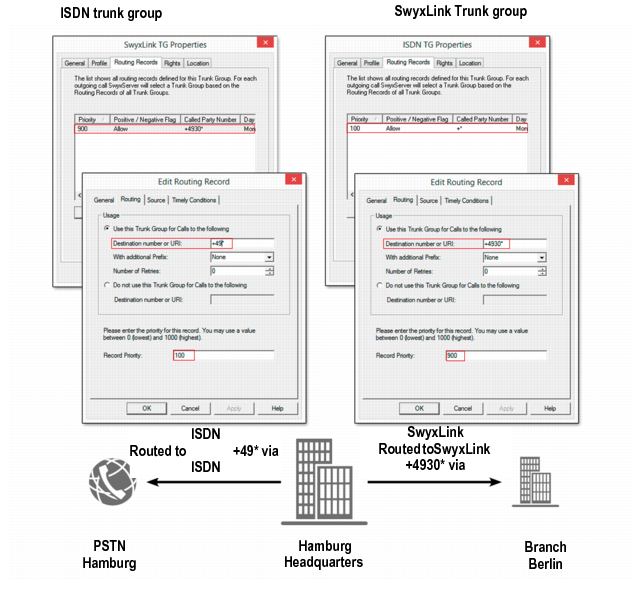Routing
Where do calls go if they can't be assigned within a SwyxServer?
Outgoing calls can be forwarded (dependent on the dialed number, time conditions and/or the caller himself) via various paths, e.g. SIP provider or ISDN. These routes can be specified individually with a different priority (0-1000) for each trunk group.
Example:
In Hamburg you have an ISDN trunk into the public phone network and a SwyxLink connection to a branch in Berlin. All calls to Berlin (+4930*) should go via the SwyxLink.
You set up a route for the trunk group in which SwyxLink is a member (Public number: +4930*), setting a high priority, e.g. 900. Set up a route for the ISDN trunk group (e.g. for Germany - destination number/URI: +49*), but with a low priority (e.g. 100). If the SwyxLink line is busy, i.e. all configured channels are in use, interrupted or deactivated, the calls will be established via the low priority connection (here: ISDN).
If you later set up an economical SIP connection, you can specify a route for this for all of Germany (+49*) with a higher priority (e.g. 800). The connection attempts are made in priority order, i.e. in this case, first the SwyxLink connection, then the SIP connection and then the connection via ISDN is selected.
You can find an overview of the available routes in Administration in the directory "Forwarding table".

